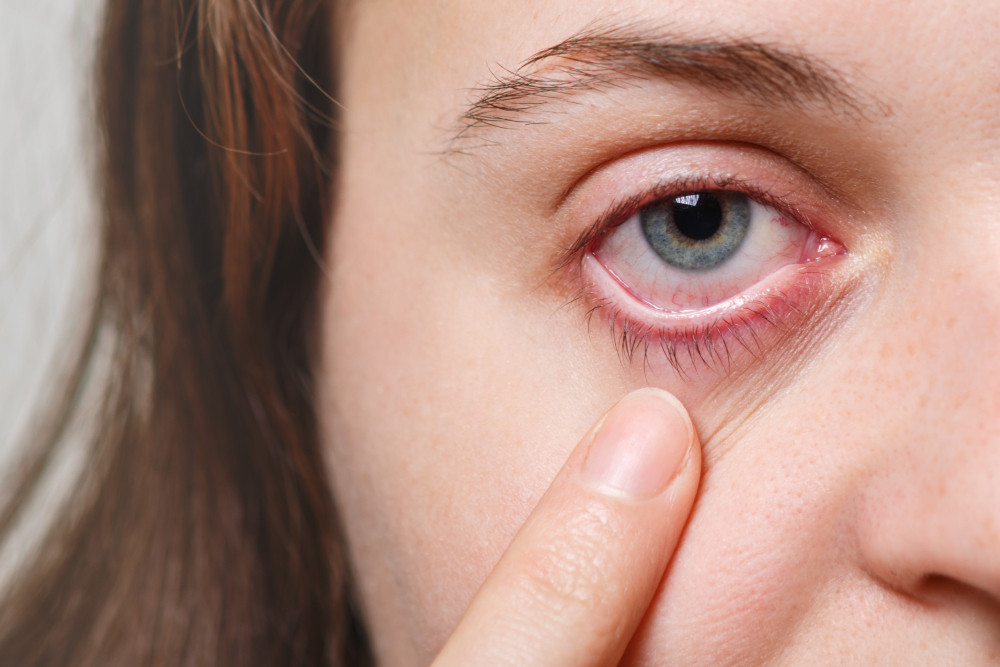Glaucoma is an eye disease in which the eye experiences damage to the optic nerve. This optic nerve has a very important role in sending visual information from the eyes to the brain. This means that if the optic nerve is damaged, it will be difficult for you to see well.
Glaucoma is one of the leading causes of blindness in adults, especially in those aged over 60 years. This is the second cause of blindness after cataracts.
Get to know the types of glaucoma
Glaucoma itself has several different types, based on the cause, including:
Open-angle glaucoma (OAG)
OAG, or open-angle glaucoma, is a common form of the condition, where people may not notice any symptoms until they begin to lose their vision. The causes of this type of glaucoma are still a mystery to experts. However, increased intraocular pressure is believed to be the main causative factor.
If the fluid in the eye cannot drain quickly enough, intraocular pressure will increase. Then, this condition can damage the optic nerve at the back of the eye, ultimately causing vision loss and blindness.
OAG also has several risk factors, such as in people with high blood pressure, diabetes, and genetic factors.
Read more: This Is The Danger If You Experience Glaukuma And Dry Eyes
Closed-angle glaucoma
Closed-angle glaucoma, also called narrow-angle glaucoma, is a rare type of glaucoma that often appears suddenly. This occurs when the angle between the iris and the cornea is too narrow or when the pupil suddenly dilates too quickly.
Sudden dilation of the pupil can cause the iris to stick to the cornea and block the drainage channel in the corner of the eye. As a result, fluid cannot come out of the eye, increasing intraocular pressure drastically and causing a series of symptoms, including:
- Severe pain in the eyes
- Redness of the eyes
- Decreased vision
- Colored halo around the lamp
- Headache
- Nauseous
- Vomit
Normal-tension glaucoma
Normal tension glaucoma or normal pressure glaucoma is a condition in which damage to the optic nerve occurs even though the intraocular pressure is within the normal range or not too high. This is one of the most frequently experienced types of glaucoma.
Experts do not fully understand why this condition occurs. However, genetic factors and family history are the main risk factors for this condition.
In normal pressure glaucoma, optic nerve damage occurs without apparent symptoms. The optic nerve is likened to an electrical cable that is important in transmitting visual signals from the eye to the brain. When these nerve fibers die, visual blind spots appear.
Early signs of normal pressure glaucoma often include loss of peripheral or side vision, which can cause a person to miss many things in everyday vision. As the disease progresses, vision will narrow, like looking through a tunnel. If optic nerve damage is severe, blindness can occur.
Read more: Symptoms And Causes Of Concentric Glaukuma In Babies
Congenital glaucoma
Congenital glaucoma occurs when the drainage channels in the baby's eyes do not form properly while in the womb. This can occur due to genetic factors or abnormal development.
Congenital glaucoma can be detected from birth. Symptoms may also appear during early childhood. Symptoms that may be seen include reddened eyes, excessive tearing, sensitivity to light, cloudy corneas, enlargement of the eyes, and the baby's inability to respond to visual stimuli.
Congenital glaucoma requires immediate medical attention to prevent permanent vision damage. With treatment, intraocular pressure can be lowered. The doctor may also provide laser therapy or even surgically repair the tear drainage ducts to restore function.
Although glaucoma cannot be cured, with treatment to treat the symptoms, the development of the disease and its severity can be prevented. Immediately consult a doctor if you experience pain in the eyes of unknown cause, headaches, sensitivity to light, nausea and vomiting, and red eyes.
If you need medical advice or consultation, you can either visit a doctor or make use of the consultation features that are available in the Ai Care application by downloading the Ai Care application from the App Store or Play Store.
Looking for more information about other diseases? Click here!
- dr. Monica Salim
Cleveland Clinic (2022). Glaucoma. Available from: https://my.clevelandclinic.org/health/diseases/4212-glaucoma
Kierstan Boyd (2023). What Is Glaucoma? Symptoms, Causes, Diagnosis, Treatment. Available from: https://www.aao.org/eye-health/diseases/what-is-glaucoma
Mayo Clinic (2022). Glaucoma. Available from: https://www.mayoclinic.org/diseases-conditions/glaucoma/symptoms-causes/syc-20372839
Navid Mahabadi, et all (2022). Open Angle Glaucoma. Available from: https://www.ncbi.nlm.nih.gov/books/NBK441887
National Eye Institute (2021). Types of Glaucoma. Available from: https://www.nei.nih.gov/learn-about-eye-health/eye-conditions-and-diseases/glaucoma/types-glaucoma
Douglas J. Rhee, MD (2023). Angle-Closure Glaucoma. Available from: https://www.msdmanuals.com/professional/eye-disorders/glaucoma/angle-closure-glaucoma
WebMD (2022). What Is Normal-Tension Glaucoma?. Available from: https://www.webmd.com/eye-health/normal-tension-glaucoma
Joseph Saling (2022). What Is Primary Congenital Glaucoma?. Available from: https://www.webmd.com/eye-health/primary-congenital-glaucoma











